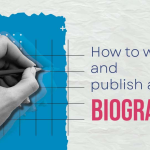International Standard Book Number, or ISBN. It is a distinguishing code given to publications like books and other written works. An ISBN is used to identify books in a uniform and globally recognised manner, making book buying, inventory control, and sales monitoring easier.
Although there are few exceptions, an ISBN is normally a 13-digit number (as of 2007) or a 10-digit number (before 2007). The location or language of publishing, the publisher, and the exact edition or format of the book are only a few of the details that are sent by each ISBN.
Read: A Complete Guide How to Get an ISBN Number in India | Complete Procedure.
Publishers, bookstores, libraries, and other businesses in the book industry use ISBNs to identify and categorise books. They are frequently needed for book listings, cataloguing, and online sales and may be located on the copyright page or back cover of a book.
It’s essential to remember that ISBNs are unique to each version of a book. Different ISBNs will often be assigned to the same book in different forms (such as hardback, paperback, digital) or editions (such as updated edition, special edition).
What is the importance of ISBN?
The importance of ISBN is multifaceted.
One published book has a unique identification provided by the ISBN system, making it possible to differentiate one edition or format of a book from others. This aids in tracking, ordering, and managing the book inventory.
- Book Discovery: Libraries, bookstores, and internet merchants employ databases that allow books to be quickly recognised and cataloged thanks to ISBNs. It enables accurate book search and retrieval, making it simpler for readers to find and learn about certain books.
- Global Standardisation: The ISBN code is a widely accepted method of identifying books. It encourages uniformity and interoperability within the publishing sector across international borders, which makes it easier for people to share information and conduct business linked to books on a worldwide scale. Publishers, distributors, and bookstores use ISBNs to track and control the distribution and sales of books throughout the supply chain. They aid with the simplification of logistical procedures including ordering, shipping, and inventory control.
- Copyright Protection: The establishment of copyright ownership and the defence of intellectual property rights can be assisted by ISBNs. Publishers can substantiate their claim to a certain edition or format by giving a book a special ISBN.
- Marketing and sales: For book listings in libraries, online stores, and other sales platforms, ISBNs are frequently necessary. A book’s exposure and accessibility to potential readers are increased by having an ISBN, which makes it simple for books to be listed, marketed, and sold through a variety of channels.
ISBN is an essential tool in the book industry, providing a standardized and efficient way to identify, categorize, and distribute books. It facilitates book discovery, ensures accuracy in book-related transactions, and contributes to the smooth functioning of the publishing and bookselling ecosystem.
Why was ISBN created?
To answer the need for a uniform mechanism to identify and distinguish books, ISBN was developed. Prior to the introduction of the ISBN, it was difficult to identify and trace books since each publisher relied on internal systems that differed between nations and even within the same publishing firm.
The primary causes for developing the ISBN are:
- Efficiency in the Book Trade: The publishing sector saw the need for a standardised identification system that would simplify book trade procedures. To improve efficiency and lower mistakes, publishers, retailers, and libraries needed a standardised method for cataloguing, ordering, and tracking books.
- Global Book Distribution: With the expansion of the book trade internationally, it was more crucial than ever to create a system that could be used in all nations and languages. An internationally recognised and usable standardised identification was made available via ISBN.’
- Better Book Discovery: As there were more books written, it was harder for readers, libraries, and booksellers to find certain works. It is now simpler for readers to find and access books because of the precise and effective book searching, cataloging, and indexing made possible by ISBN.
- Copyright Protection: The ISBN was used to establish ownership of copyrights and safeguard intellectual property rights. Publishers may prove their ownership of a particular version of a book by giving each edition or format a distinctive identification and protecting their creations from unauthorised use or infringement.
In order to standardise book identification and establish a trustworthy and effective system that would benefit all parties engaged in the book trade, including publishers, retailers, libraries, and readers, the publishing industry introduced the ISBN.
How does ISBN work?
Each edition and variant of a book is given an ISBN, or International Standard Book Number, which is a distinctive identifier. It acts as a uniform method of identifying books and makes distribution and cataloging easier. This is how the ISBN system functions:
Structure
By using the ISBN system, books can be easily identified, located, and ordered by various stakeholders in the book trade, contributing to the efficient distribution and management of books on a global scale. An ISBN is made up of four or five sets of four or 10 digits, depending on the number. A check digit, which is determined based on the previous digits and used as a kind of error detection, might be the final digit.
Prefix Elements
Each edition and variant of a book is given an ISBN, or International Standard Book Number, which is a distinctive identifier. It acts as a uniform method of identifying books and makes distribution and cataloging easier. This is how the ISBN system functions:
- The registration group element
Which is part of the registration group, and indicates the individual publisher or imprint. Its length can change, often falling between one and seven digits. - Publication Element
The book’s edition or format is specified by the publication element. It may contain details like the version, format, or edition number. - Check Digit
The last digit of an ISBN with 13 digits is the check digit, and it is determined by a particular procedure. It aids in the identification of ISBN flaws or inconsistencies. - Uniqueness
Each ISBN is exclusive to a certain book edition. The ISBNs for various editions, such as hardback, paperback, and e-book versions, will vary. The same ISBN as the initial publication may be used for reprints or reissues of the same edition. - ISBN Agencies
ISBNs are issued and managed by national or regional ISBN agencies. These agencies assign ISBNs to publishers within their respective territories and maintain the database of ISBNs and associated book metadata.
ISBNs are issued and managed by national or regional ISBN agencies. These agencies assign ISBNs to publishers within their respective territories and maintain the database of ISBNs and associated book metadata.
Read: Learn How to Promote Your Book on Social Media Platforms Effectively.
Getting an ISBN (International Standard Book Number) for your book is an important step in the publishing process. An ISBN serves as a unique identifier for your book, making it easier for retailers, libraries, and distributors to track and sell your publication. Here’s an essential guide on how to obtain an ISBN number for your book:
- Understand the purpose of an ISBN: An ISBN is a 13-digit number that identifies your book and its specific edition. It helps in cataloging, inventory management, and book ordering. Each format of your book (e.g., print, ebook, audiobook) requires a separate ISBN.
- Determine your publishing plans: Decide on the formats in which you intend to publish your book, such as print, ebook, or audiobook. Remember that each format requires a unique ISBN.
- Identify the ISBN agency in your country: ISBNs are administered by authorized agencies in each country. Locate the agency responsible for ISBN allocation in your country. For example, in the United States, Bowker is the official ISBN agency.
- Contact the ISBN agency: Reach out to the ISBN agency either through their website or by phone. Inquire about their specific requirements and procedures for obtaining an ISBN. They may have an online application form or provide guidance on the necessary steps.
- Provide necessary information: Be prepared to provide details about your book, including its title, author, format, edition, language, publisher name, and publishing date. The agency may also request additional information depending on their requirements.
- Pay the fee, if applicable: Some ISBN agencies charge a fee for obtaining an ISBN, while others may provide them for free. Confirm with the agency if there is a fee associated with acquiring an ISBN for your book.
- Receive your ISBN: Once you’ve submitted the required information and paid any applicable fees, the ISBN agency will assign an ISBN to your book. They will provide you with the unique 13-digit number associated with each format of your publication.
- Use the ISBN correctly: Incorporate the assigned ISBN into the metadata and copyright page of your book. Ensure that it is accurate and matches the format of your publication.
- Consider barcode creation: Although not mandatory, including a barcode on the cover of your print book can simplify the sales process. Some ISBN agencies or third-party services offer barcode creation services.
Remember that the process of obtaining an ISBN can vary slightly depending on your country and the agency responsible for ISBN allocation. It’s crucial to follow the guidelines provided by the specific agency in your region.
















